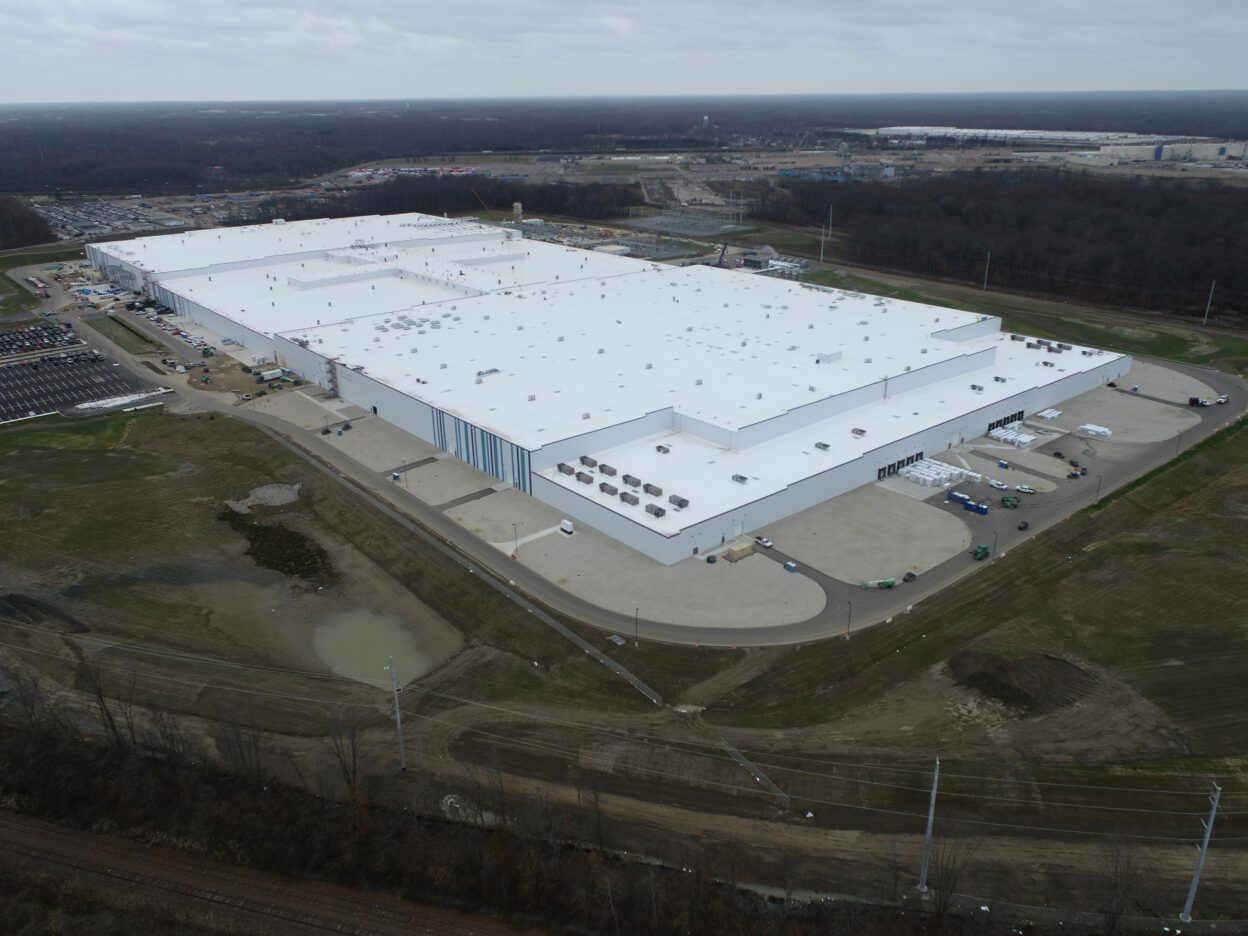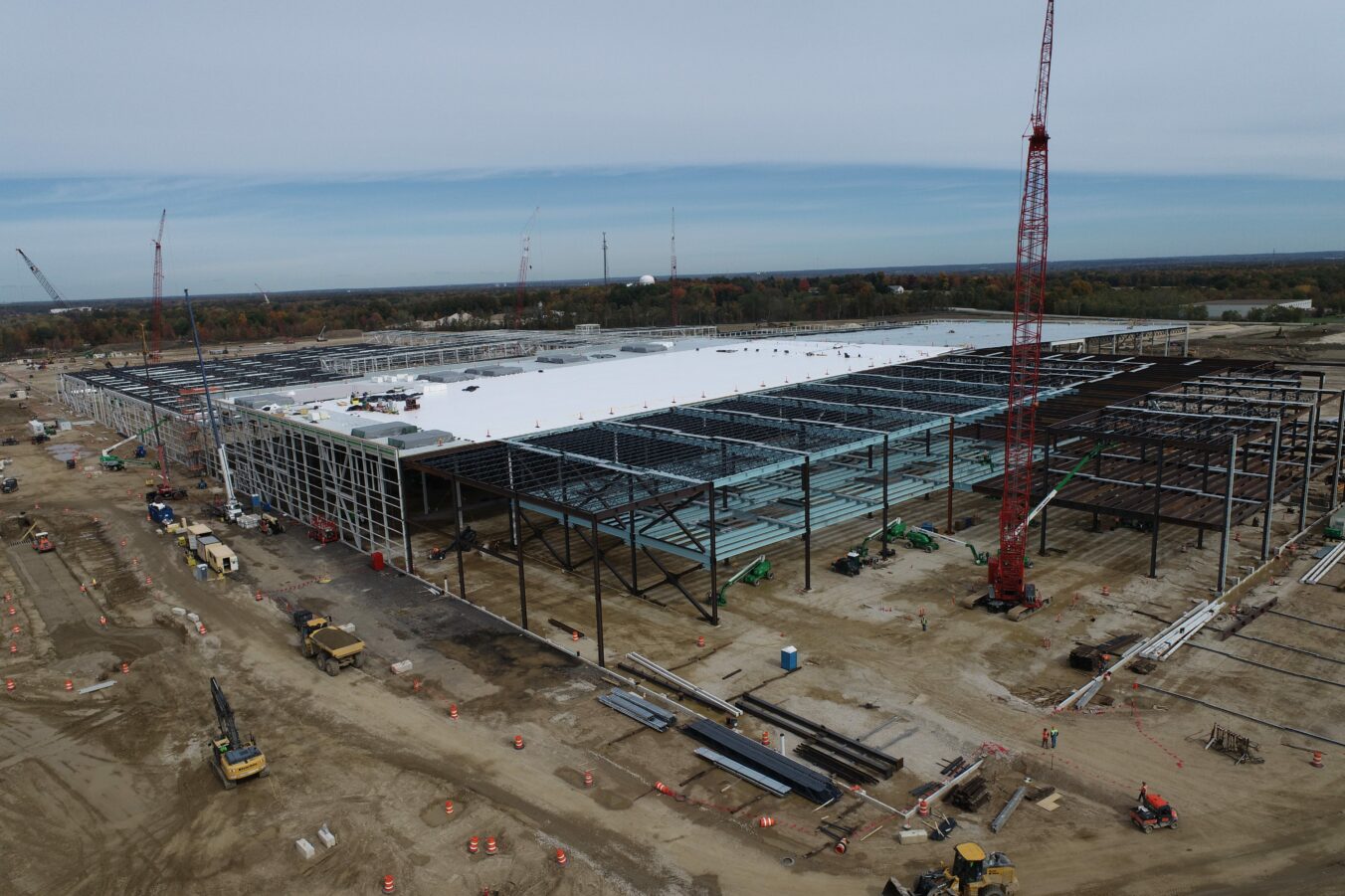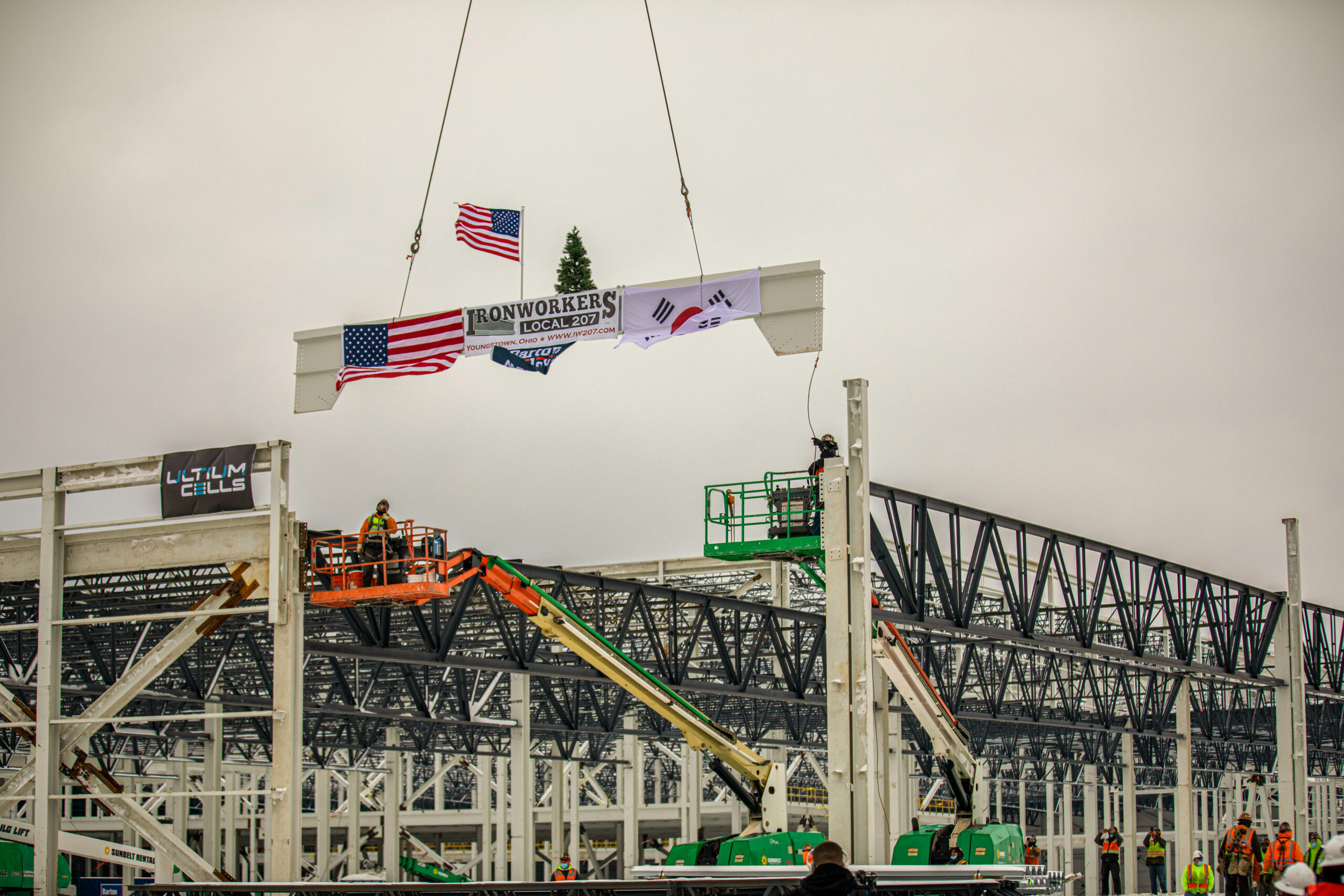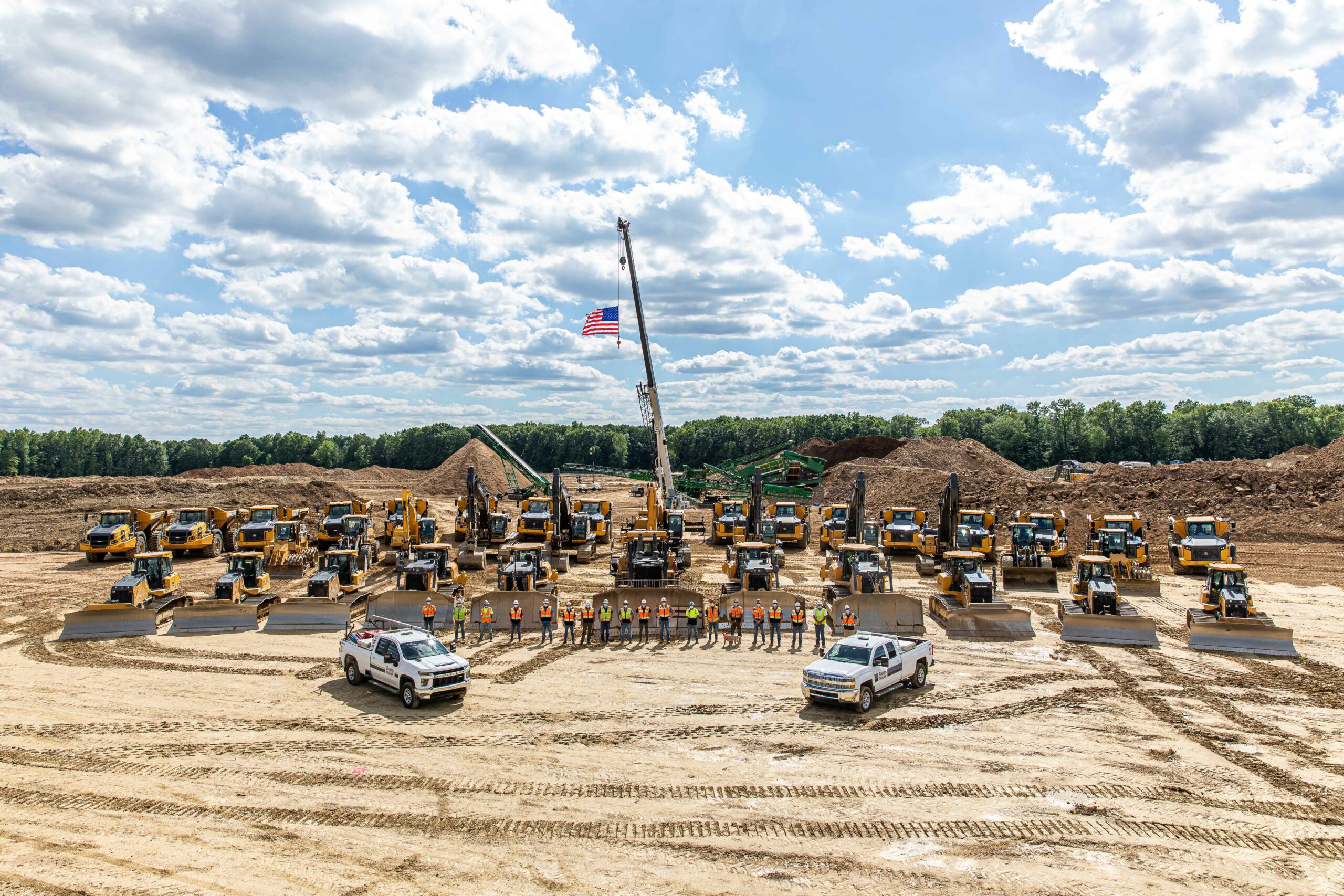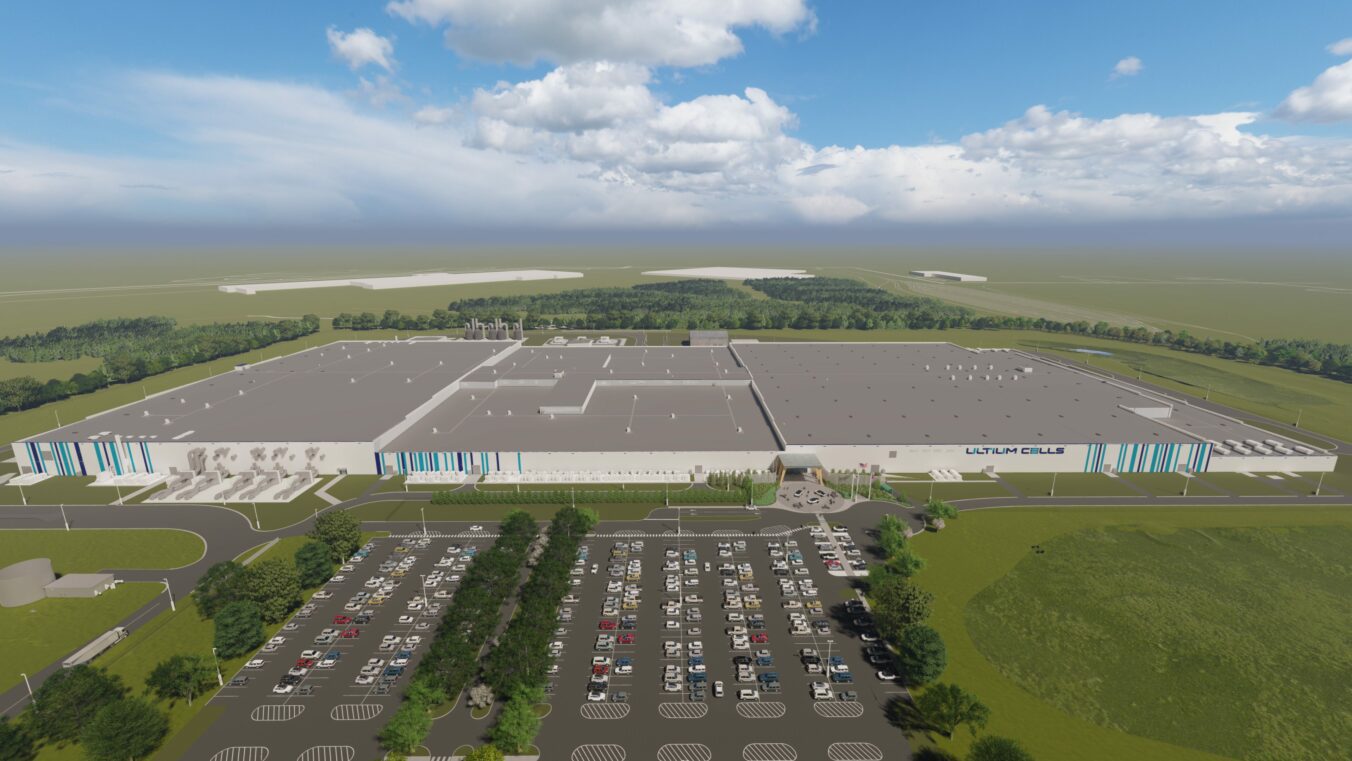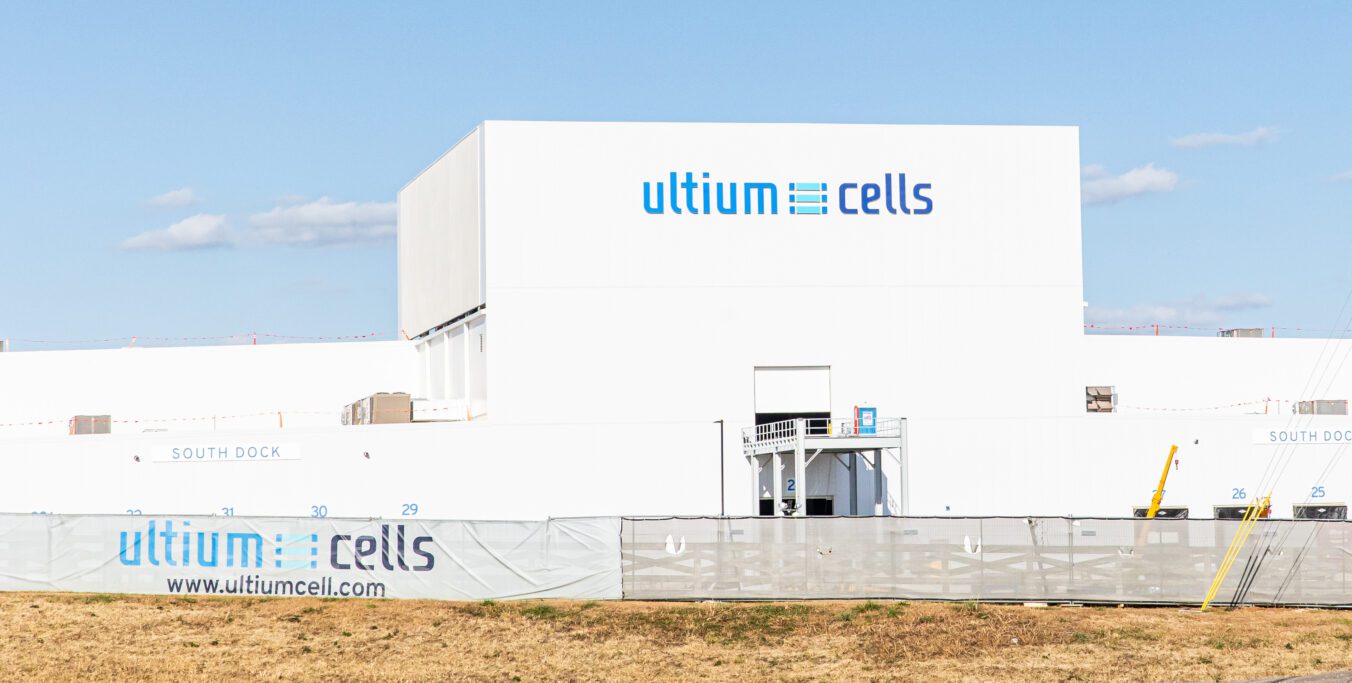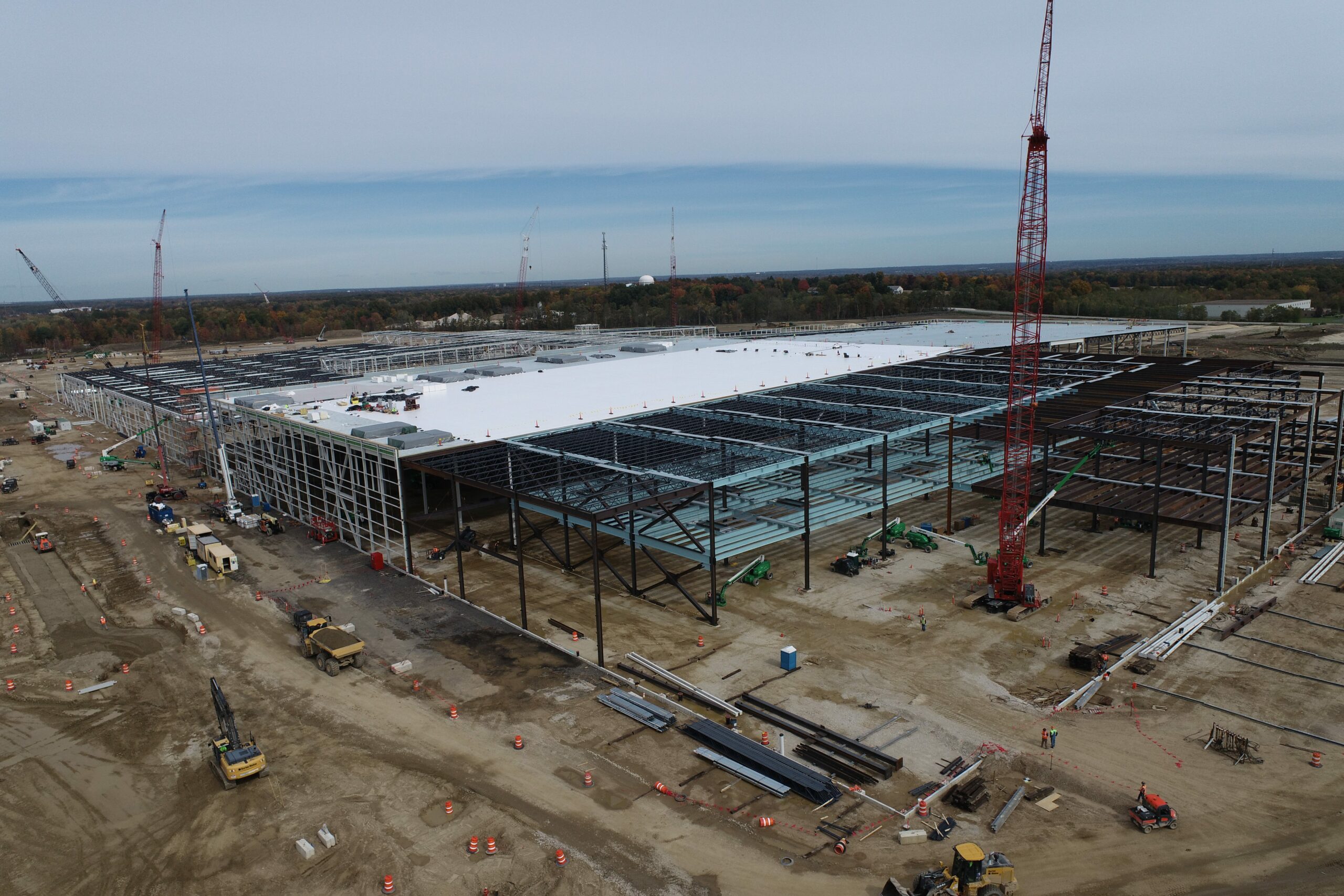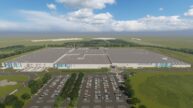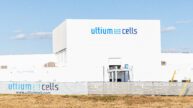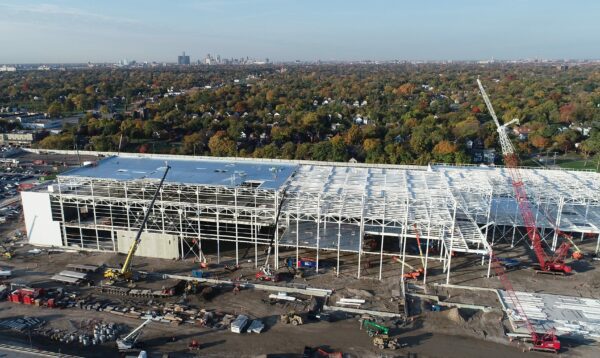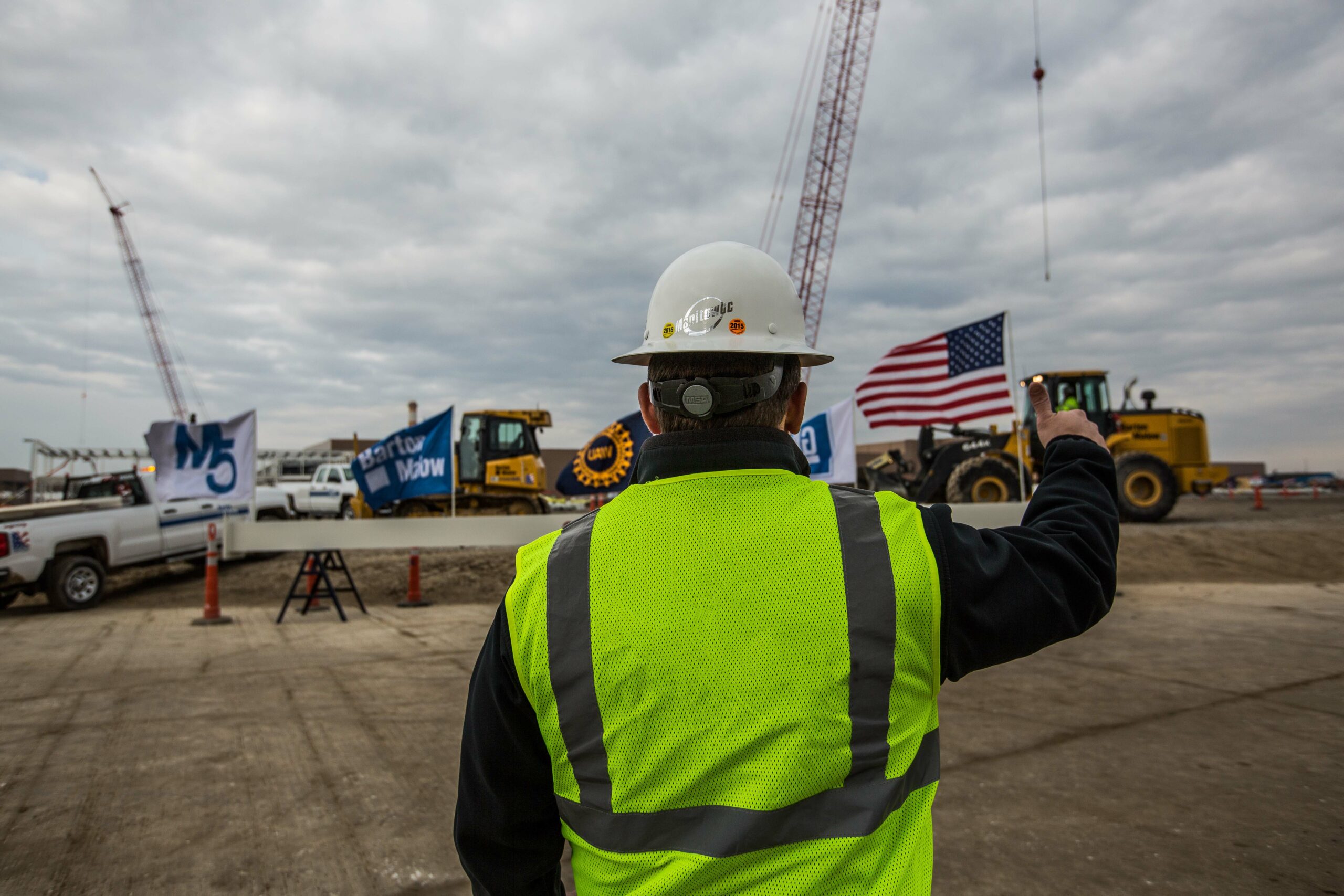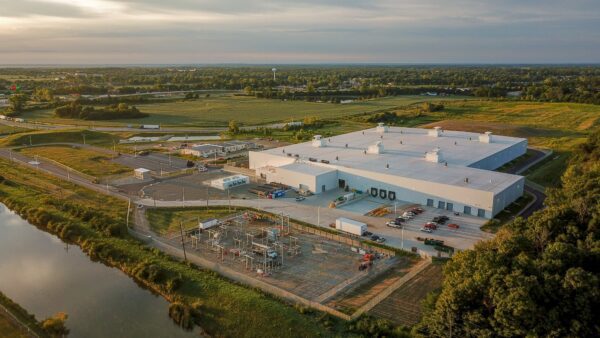Lordstown, OH
Barton Malow provided construction services through an Integrated Project Delivery (IPD) approach for a new lithium-ion electric vehicle battery cell manufacturing facility in Northeast Ohio. Located on 156 acres, the over 2.8 million-SF facility produces 35 gigawatt hours annually and created more than 1,200 new jobs.
Barton Malow self-performed layout, civil, concrete/resteel, steel erection, and interior finishes (metal studs, drywall, doors, and hardware).
Despite the massive scope of this electric vehicle (EV) battery cell manufacturing project, Barton Malow achieved major milestones in rapid succession. The IPD team mobilized to the 156-acre greenfield site in early 2020. Barton Malow self-perform trades started site-clearing and logging in mid-April 2020. Mass grading began later that month, and our first foundation pour occurred in early July 2020. Steel erection began later that month. The team celebrated topping out with a ceremony on February 19, 2021. Equipment installation followed in summer 2021. Our self-perform team hit one million workforce hours worked in spring 2021 — already an incredible achievement. At the end of the project, we reached approximately 2.7 million hours worked.
As the first facility to pave the way for Barton Malow’s entrance into the EV market, the building achieved incredible success and recognition after completion in late 2022. The project received an Award of Merit in the Energy/Industrial category from ENR Midwest’s 2023 ‘Best Projects,’ which honors projects that represent outstanding quality of work. It earned the TAUC 2023 Joseph R. La Rocca Union Project of the Year Award for its exceptional work performed under labor-management cooperation, specifically pertaining to collaboration and teamwork, quality and craftsmanship, execution, and safety, and was among the National Association of Women in Construction’s 2023 Excellence Awards.
Most recently, the project was honored with the Lean Construction Institute’s first annual Engineering in Design Award for delivering excellence in fit-for-use and engineering design while advancing the industry through collaborative Lean Project Delivery.
Spring Hill, TN
Down south in Spring Hill, Tennessee, plans were announced for the second Ultium Cells facility in April 2021, and the project is nearing completion in the spring of 2024. Team members celebrated a construction milestone in June 2022 with the final beam installation for the 2.8 million-SF operation.
The state-of-the-art plant is scheduled to begin production in 2024 and, by the completion of the launch, will employ 1,700 people in new high-tech jobs to support the production of GM’s Ultium Platform-based EVs, including the Cadillac LYRIQ.
In true Barton Malow fashion, the project teams haven’t only built up the project itself but the surrounding communities, too. It has sponsored several community organizations, including the Nashville Firefighters Association (IAFF Local 140), the High Hopes Development Center, the local VFW, the Boys & Girls Clubs of Middle Tennessee, and more.
Lansing, MI
The third Ultium Cells building in Lansing, Michigan, is based upon the original Ultium project in Lordstown, Ohio, but with an additional fifth coater line, as well as associated assembly lines. The 2.8 million-SF facility is expected to create 1,700 new high-tech jobs and generate about 36 gigawatt hours of battery cell capacity at full production.
The facility, which has been fully enclosed since September 2023, will supply battery cells to Orion Assembly in Michigan and other GM electric vehicle plants. The project is getting closer to completion and will celebrate 3 million work hours in May 2024.
Once all three Ultium Cells facilities are fully operational, the plants will supply battery cells to various GM facilities throughout North America and will use the most advanced and efficient battery cell manufacturing processes. The facilities will be extremely flexible and adapt to ongoing advances in technology and materials.
